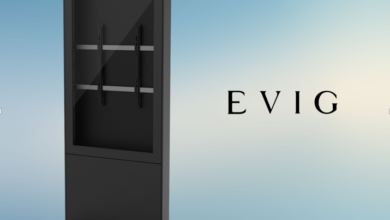Can Portable Solar Panels Power Your Home?

Portable solar panels have gained significant attention due to their flexibility and ease of use. As more homeowners seek sustainable energy solutions, the question arises: can portable solar panels power an entire home? To answer this, we must consider several factors including energy consumption, the capacities and limitations of portable solar panels, and how they can be effectively integrated into home energy systems. Portable solar panels are mainly designed for their convenience and mobility, making them popular for camping trips, RVs, or as temporary power sources. However, their capabilities for powering a home, even partially, depend largely on energy needs and the setup of the home’s electrical system. This blog will explore what portable solar panels are, how they work, their capabilities and limitations, and practical ways to incorporate them into your home energy strategy.
Understanding Portable Solar Panels
What Are Portable Solar Panels?
Portable solar panels are compact, mobile units designed to harness solar energy and convert it into electrical power. Unlike permanent solar installations on rooftops, these panels can be transported and deployed as needed. Typically, portable solar panels come in folding designs or compact kits that include a charge controller and built-in battery storage, allowing for immediate use once exposed to sunlight. They’re often used in scenarios where temporary or supplementary power is required, such as camping, RVing, or during power outages. Due to their lightweight and durable construction, portable solar panels provide a convenient solution for generating clean energy on the go.
How Do They Work?
Portable solar panels operate on the basic principles of photovoltaic technology. When exposed to sunlight, the photovoltaic cells within the panel convert light into direct current (DC) electricity. This generated DC power is typically stored in an integrated or external battery pack for later use. A charge controller regulates the flow of electricity to prevent overcharging of the battery. Some systems also include an inverter to convert DC power to alternating current (AC), which is used by most household appliances. The mobility of these panels allows users to position them optimally to maximize sunlight exposure and efficiency, ensuring a continuous supply of renewable energy in various conditions.
See also: The Rising Importance of Protective Packaging in Today’s Market
Evaluating Home Energy Needs
Average Household Energy Consumption
Understanding your home’s energy consumption is crucial before considering portable solar panels. An average household in the United States consumes approximately 877 kWh per month, based on data from the U.S. Energy Information Administration. Major energy consumers in a home include heating and cooling systems, water heaters, refrigerators, lighting, and electronic devices. By identifying high-energy usage appliances and habits, you can better estimate the minimum energy output required from your solar panels to meet your needs. A consistent review of utility bills can provide insights into seasonal energy consumption patterns, highlighting periods of higher energy demand.
Matching Energy Needs with Portable Solar Output
Matching your home’s energy needs with the output of portable solar panels involves an understanding of the panels’ capacity. Portable solar panels typically range between 60 to 200 watts per panel. For instance, if your daily energy consumption is around 30 kWh, achieving this solely with portable panels would be unrealistic due to their limited output. However, they can effectively power specific low-energy appliances or charge battery storage systems. Using an energy consumption calculator can help you determine how many panels would be required to meet partial energy needs, making it easier to plan their integration as supplementary sources.
Capabilities and Limitations
What Portable Solar Panels Can Power
Portable solar panels are highly efficient for powering low-energy devices and appliances. They are often used to charge smartphones, laptops, and portable battery packs. Small appliances like LED lights, fans, and electric coolers can also be powered effectively. In addition, integrated with battery storage, they can provide backup power during outages and charge essential devices during emergencies. Their portability makes them ideal for outdoor activities and off-grid living scenarios, where reliable access to power is necessary but traditional power sources are unavailable.
Limitations in Whole-House Power Supply
While portable solar panels are versatile, their ability to power an entire home is limited. Due to their smaller size and lower energy output, they cannot support high-energy-consuming systems like HVAC units, water heaters, or large kitchen appliances simultaneously. Additionally, the intermittent nature of solar energy means that without sufficient battery storage or grid connectivity, relying solely on portable panels for all household energy needs can lead to power shortages. Therefore, they are best suited as supplementary power sources rather than primary, providing flexibility but not complete energy independence.

Integrating Portable Solar Panels at Home
Backup Power Solutions
Portable solar panels can enhance your home’s energy resilience by serving as backup power solutions. During power outages, having a quick and easy-to-deploy alternative like portable panels ensures essential devices remain operational. Connecting portable panels to a battery storage system allows you to store excess power generated during sunny periods. This stored power can then be used to keep important appliances like refrigerators, phones, and medical devices running during blackouts. Regular testing and maintenance of your portable solar setup ensure its readiness for unexpected outages.
Supplementing Existing Energy Systems
Integrating portable solar panels with existing grid-connected systems can help lower your energy bills and reduce reliance on non-renewable energy. By positioning panels in areas with optimal sunlight, you can generate supplemental power to offset the household’s energy consumption. Portable panels can also be used in conjunction with net metering policies, where excess electricity produced and not immediately used can be fed back into the grid for credits. These systems work as efficient augmentative solutions, rather than complete replacements, enabling you to take steps towards greener living without massive initial investments.
Conclusion
Portable solar panels offer an innovative, flexible solution for generating renewable energy, albeit with notable limitations concerning whole-house power supply. They are particularly valuable as supplemental sources or backup power during outages, making them a practical addition to any home energy strategy. Understanding your household’s energy needs and the realistic output of portable solar panels is essential for maximizing their benefits. While they may not completely replace traditional power sources due to their limited capacity, their portability and ease of use make them a versatile option for enhancing home energy resilience. By integrating portable solar panels thoughtfully, homeowners can embrace renewable energy efficiently, reducing their carbon footprint while ensuring access to essential power.




